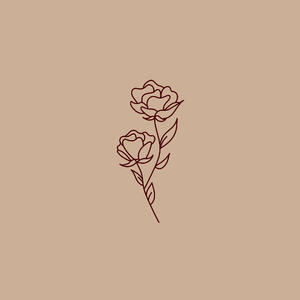Coolie Women
Honouring women of Indian indentured heritage throughout history, past and present.
Due to Instagram’s limited character count in its captions and its inability to include links in posts, the sources for all the information shared on the page are linked here under their respective subject.
Updated October 4, 2020
Kowsilla
- Kowsilla: A Leonora Woman
- Kowsilla – an ordinary woman who made an extraordinary sacrifice for her fellow humans
Sumintra
Rajkumari Singh / Alice Bhagwandai Singh
- Indians in the Caribbean
- Rajkumari Singh’s Vision of Art and Politics
- Rajkumari Singh (1923 - 1979): A new offering on racial conflict resolution
- Diaspora Culture: The sine qua non of the Immigrants’ success
Pita Pyaree
- From runaway lass to legendary showgirl – Pita Pyaree is a ‘Special Person’
- Pita Pyaree
- Yesteryear dancing star Pita Pyaree dies at 94
Indian women in Guadeloupe
Clara Ramdeholl
- Ramdeholl Memorial Church
- A little church for a bright New Amsterdam girl
- Celebrating the Centenary of Abolition of Indian Indentureship
Gladys Ramsarran
- A little church for a bright New Amsterdam girl
- Celebrating the Centenary of Abolition of Indian Indentureship
Postcard Image of Indian Women
- Diversity in the Stacks: Indo-Caribbean Identity
- Postcards relating to Indo-Caribbeans, late 19th century to 1975
Ramlali Awadhbihari
Moti Marhé interviews the longest living British-Indian indentured labourer of Suriname, Mrs. Ramlali Awadhbihari (104 years old), in or about 1982. The producer Abdoelrahman Ramjan made the filmdocumentary 'Aji Ramlali', on her life in which we followed her during the last five years before her death. The interviews are in the only language she could speak: her Sarnami-Hindustani.
Godna
- From marks of status to a kind of jewellery, tattoos are part of a centuries-old Indian tradition
- Godna: Tattooing as Cultural and Social Practice
- The social role of tattooing in Chhattisgarh
- The Role of Hindu Women in Preserving Intangible Cultural Heritage in Mauritius
- GODNA (BODY TATTOOING) TRADITION OF AWADH- FROM MYTHOLOGY TO MODERNITY
Asian Labourers in Trinidad
Aunty Chalma
Elandi Yeagan
“Coolies: How Britain Reinvented Slavery” tells the astonishing and controversial story of the systematic recruitment and migration of over a million Indians to all corners of the Empire. It is a chapter in colonial history that implicates figures at the very highest level of the British establishment and has defined the demographic shape of the modern world.
Women Carrying Metal Jugs in Guyana
- Postcards from Empire
- “Minority” Identity Development Model For An Indo-Caribbean American in Five Stages
Tetary Begum Janey
- Tetary, a Forgotten Hindu Heroine (Original Dutch Article)
- Tetary, a Forgotten Hindu Heroine (English Translation)
- Tasiana Ramdin: 145 years of Hindustani Immigration - Janey Tetary, a hidden heroine (Original Dutch Article)
- Tasiana Ramdin: 145 years of Hindustani Immigration - Janey Tetary, a hidden heroine (English Translation)
- Who is Janey Tetary?
- Tetary Has Risen (Original Dutch Article)
- Tetary Has Risen (English Translation)
- Image Source: Harry Peer
Quotes
“An Indian woman (who)… belonged to Lucknow, … met a man who told her that she would be able to get twenty-five rupees a month in a European family, by taking care of the baby of a lady who lived about 6 hours’ sea-journey from Calcutta; she went on board and, instead of taking her to the place proposed she was brought to Natal” (Indian Immigrants Commission Report, Natal, 1887, cited in Carter and Torabully, 2002, p. 20).
— Indentured labour from South Asia (1834-1917)
“"Do not speak to the Indians," said the British to the Africans. "They are vile and carry diseases."
"Do not speak to the Africans," said the British to the Indians. "They are vile and carry diseases."
It was a strategy to prevent the union of the groups. Together they would be strong enough to rebel against their oppressors.”
— Elizabeth Jaikaran, Excerpt from “The Indo-Caribbean Experience: Now and Then”
“”Dougla” is a slur meaning “bastard” or “mutt.” It has its origins in Bhojpuri, the dialect of Hindi spoken by the majority of Indians who migrated as indentured laborers in the 19th and early 20th centuries. In North India, the word was used to describe someone with parents of different castes. It had the strong connotation of pollution, since orthodox Hinduism saw relationships across caste as illegitimate. In the Caribbean, the word was applied to the children of black and Indian parents. Its sting was no less in this transplanted setting.”
— Gaiutra Bahadur, Excerpt from “"Dougla" Politics”
More on Dougla heritage:
